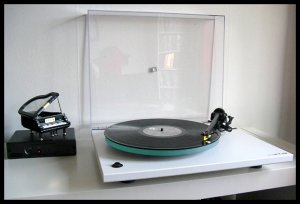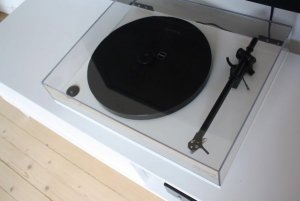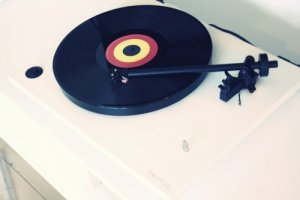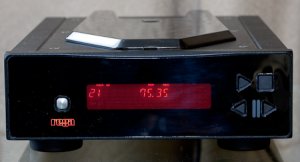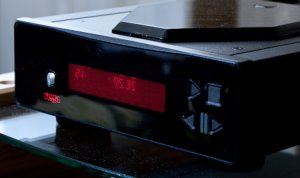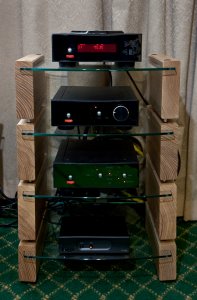Digger Rega 8) 8) 8) Platerspiller for livet

Fant litt artig lesing fra Mr Rega him self.
Rega VTA(Vertical Tracking Angle) Fact Sheet
by Roy Gandy
Quote: "Every problem has a solution. If there is no solution, there is no problem."
The Tonearm: The maximum up/down adjustment on a tonearm is about 0.5 inches (12mm). That being approximately 1 degree VTA adjustment.
[Correction: if you do the maths' a 0.5inch variation on a 9 inch arm is about a 3° variation. You can work this out yourself once you remember that the sin() of an angle is the change in the y coordinate divided by the radius, so 0.5/9 ? 0.055 ? sin(3°)]
The Cartridge: Each model of cartridge has its own unique design which also determines the stylus VTA. Rega has accurately measured the VTA on at least one hundred different cartridge models. The lowest VTA we have measured was 24° (even though the manufacturer claimed 20°) and the highest was 36°. Most cartridges have a VTA of between 28° to 32°. The VTA of Rega cartridge is approximately 28°.
The Record: The VTA of a record cutting stylus is set to give the best continuous cut of the lacquer. Records are cut with a VTA which varies between 0° and 20°. On an individual record the VTA will vary by 7° or more, depending on the type of cutting head used, the depth of cut, the musical frequency and the lacquer springback. The VTA of the groove on every individual record varies by at least 7° over the record. Every record is cut under 20°.
Futility: We can see that cartridge VTA is normally around 10° higher than the record cutting angle. And the record cutting angle varies by around 7° whilst it is being played.
THEREFORE A MAXIMUM ARM ADJUSTMENT OF ONLY 1° CAN BE SEEN TO BE COMPLETELY FUTILE.
To accurately match cartridge VTA to the record cutting angle the back of the arm would need to be well below the record (impossible!) and the cartridge VTA would need to vary at least 7° whilst playing the record!
Normal advice: Most informed advice is to keep the arm tube roughly parallel to the record surface. In fact, the VTA becomes more correct as the rear of the arm is lowered as much as possible, the limit being when the arm or cartridge touches the record.
Worst case: The most extreme situation is a record cutting angle of 0° and a cartridge VTA of 36°. The result is a VTA inaccuracy of 36°.
Question: Can there be any point in playing around with 1° of VTA?
VTA adjustment is actually a neurosis NOT a technical adjustment.
An Alternative: If you alter the playing weight of a normal cartridge by 0.1 of a gram the stylus VTA will alter by around 1.5°.
Another Alternative: If the room temperature increases by 5° F, the stylus rubber suspension will soften and decrease the VTA by 1°.
"but when I alter the VTA I hear a difference"
Of course you do. Any variation or change to the very important joint between the arm and turntable will alter the sound quality. Try simply tightening or loosening the main arm fixing nut, the sound will change. Try tightening or loosening the cartridge fixing nuts, the sound will also change. Almost any change or adjustment to a turntable/arm/cartridge will alter the sound quality if one listens with an acute level of perception.
We hope we have explained to the reader that VTA adjustment is of little or no significance. There are many other simple structural changes that are more important, such as fixing the cartridge rigidly to the arm and fixing the arm tightly to the turntable.








